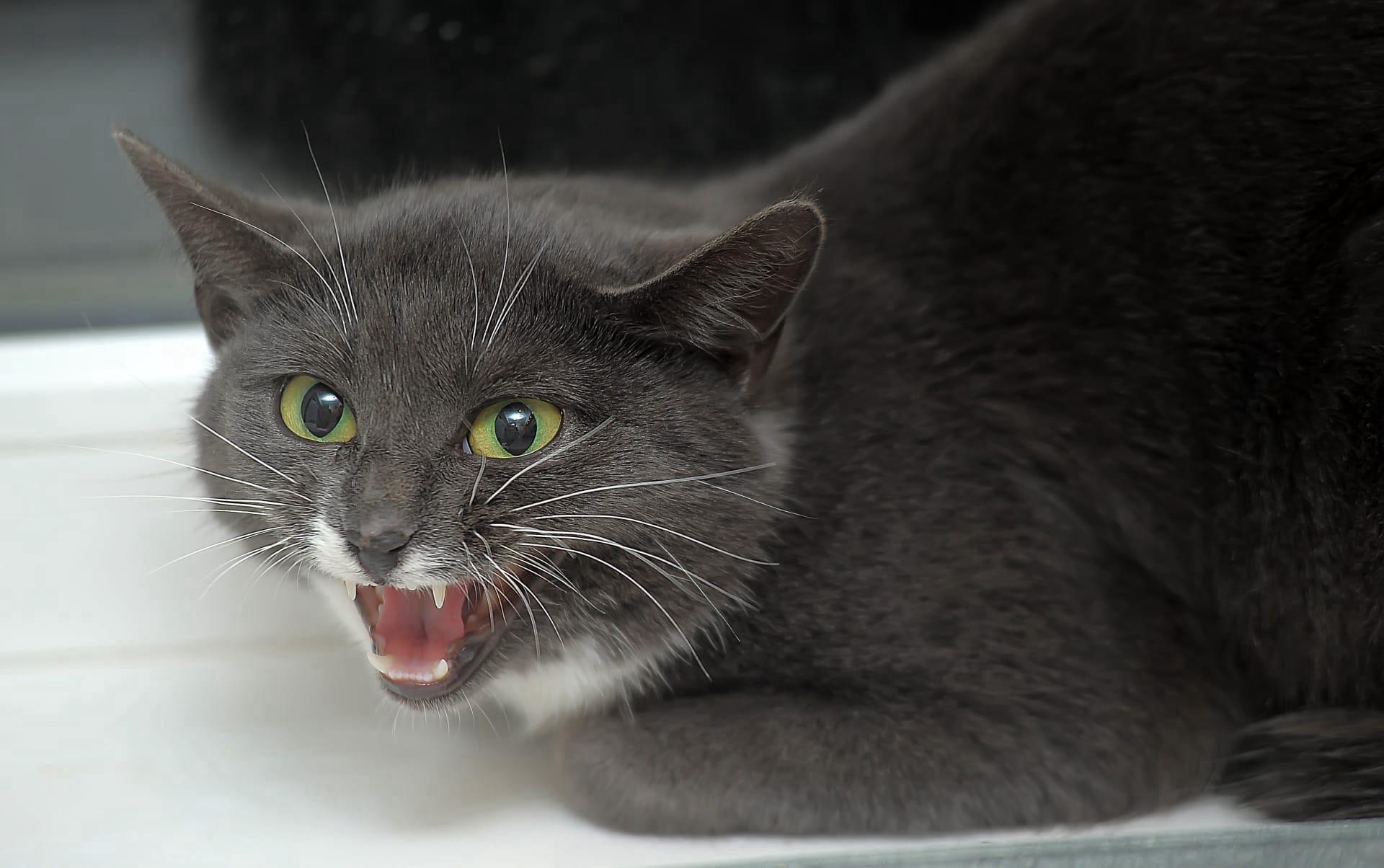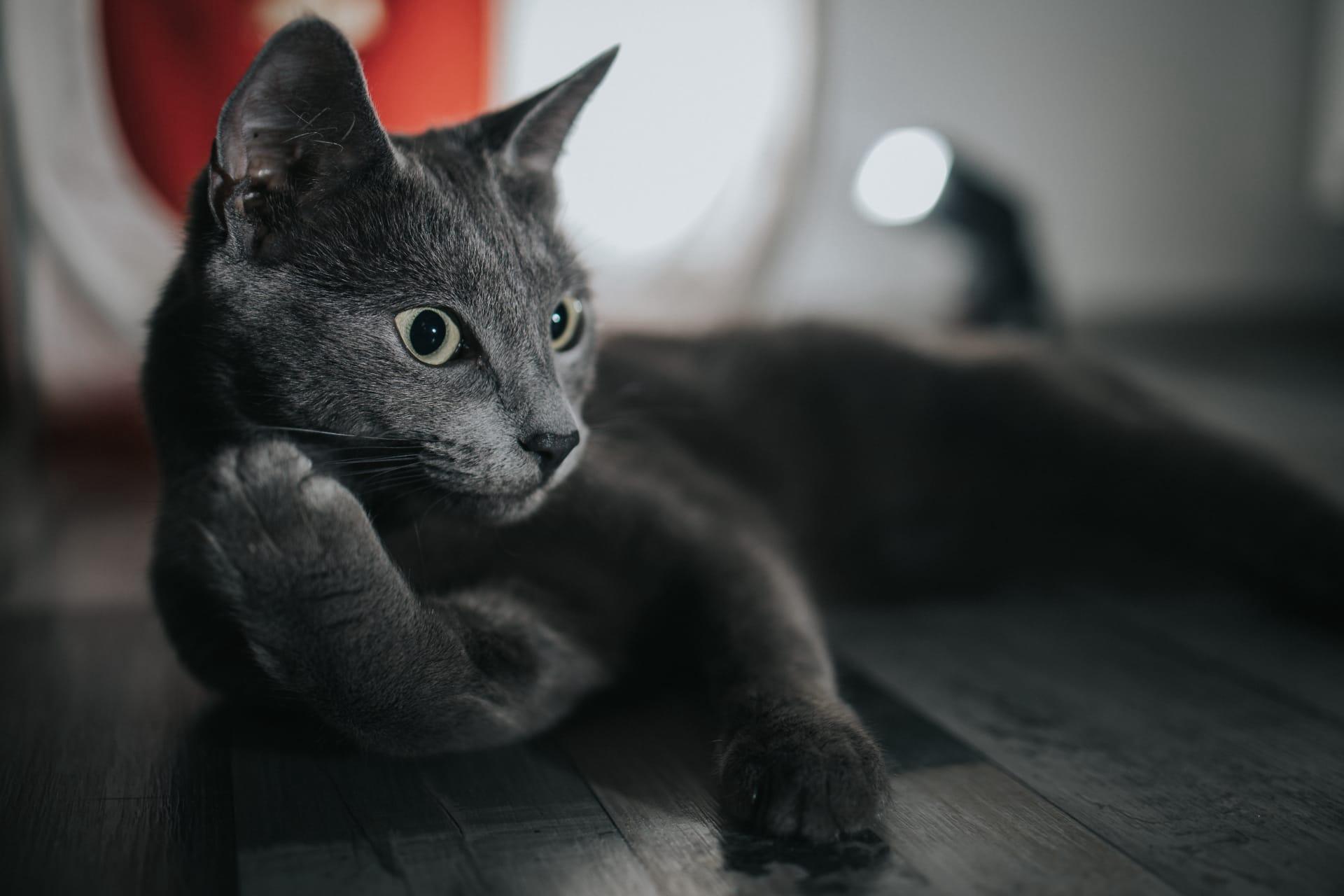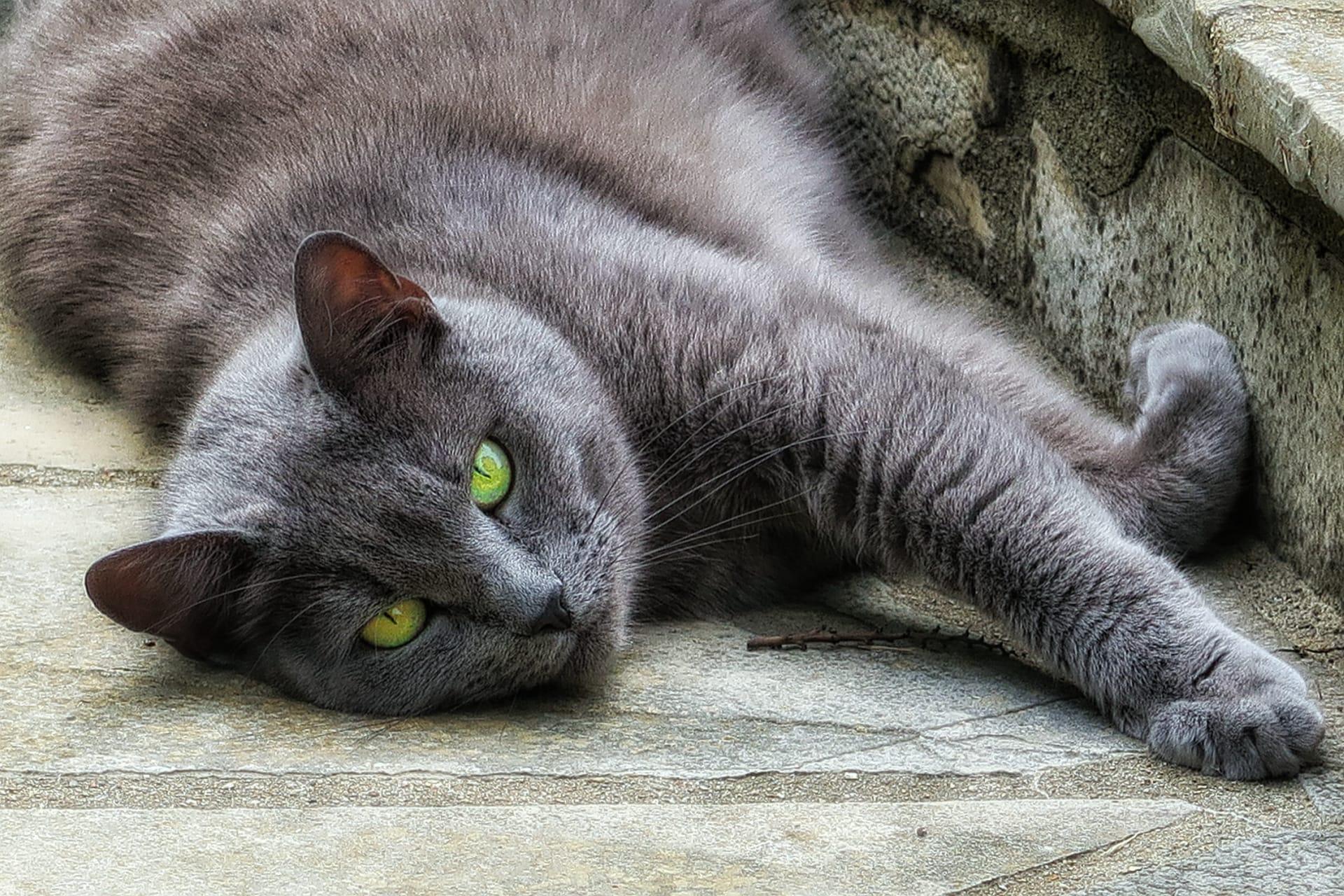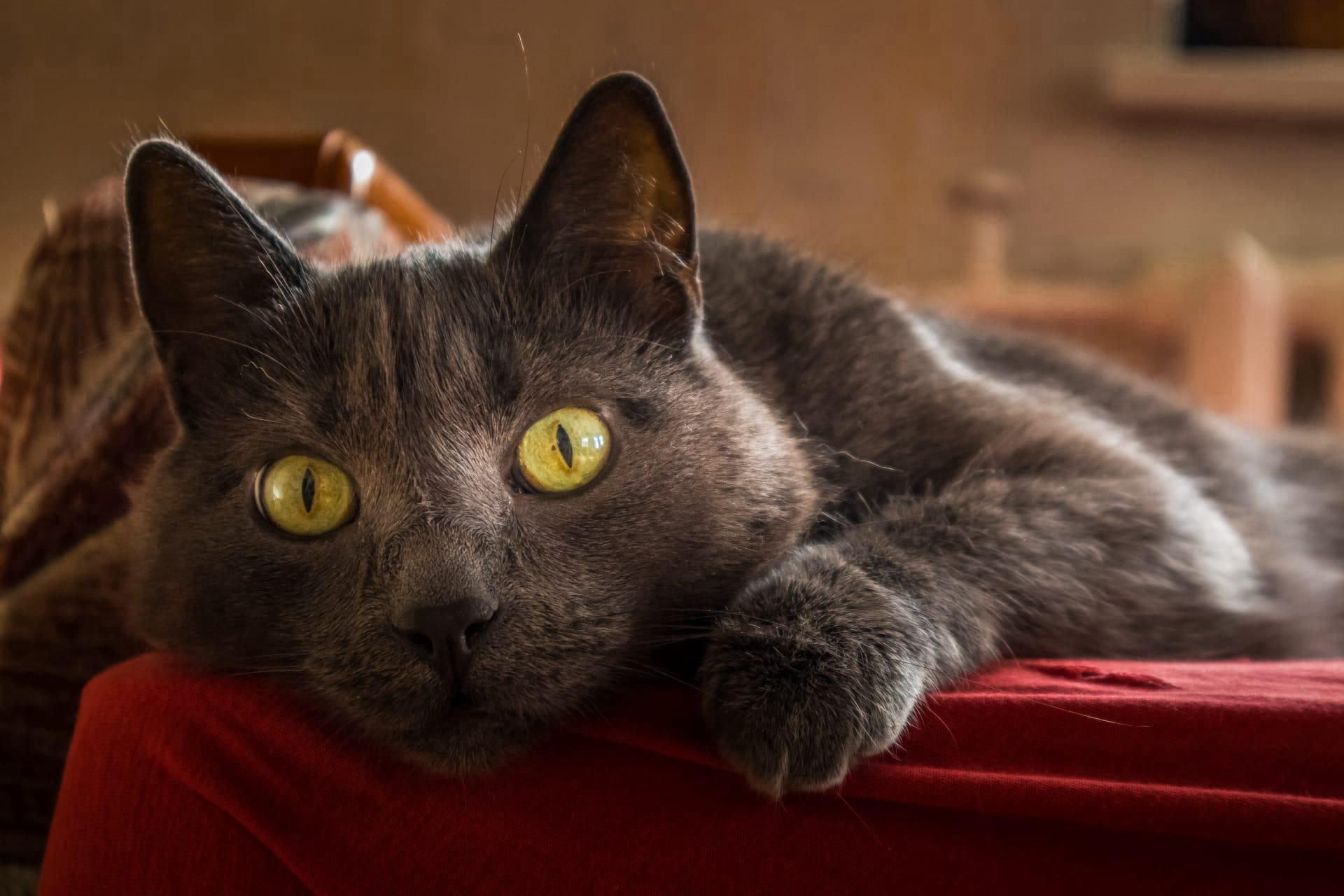1
The Russian Blue cat is renowned for its striking coat, which has a unique silvery-blue color due to the double layer of fur. The top layer is comprised of guard hairs that give the coat a gleaming sheen, especially under sunlight. This sheen is not just for show; it has a practical aspect as well. The coat's texture is incredibly dense and plush, which historically provided protection against the harsh, cold climates of Russia. This double coat varies in length across the body, being shorter on the face and shoulders, and slightly longer on the body and tail, creating a luxurious feel that's both a visual and tactile delight.
Another fascinating fact about the Russian Blue cat is its slender, elegant body structure, complemented by long legs and fine bones. This physique contributes to its graceful movements and athletic abilities. Despite their delicate appearance, Russian Blues are quite muscular, allowing them to jump high and run swiftly. Their average weight ranges from 7 to 15 pounds (about 3.2 to 6.8 kilograms), but thanks to their slim build, they often appear lighter than they actually are. This combination of agility and elegance makes the Russian Blue both a captivating and playful companion.

2
Renowned for their intelligence and curious nature, Russian Blue cats are capable of opening doors, retrieving toys, and engaging in complex games. Their smart and observant nature means they can be easily trained to perform tricks or use puzzle feeders, which not only entertains them but also stimulates their intellect. This intelligence is matched with a reserved but affectionate temperament towards their human companions, making them excellent pets for families and individuals alike.
Aside from their physical traits, Russian Blues are known for their low-shedding fur, making them a more hypoallergenic option for cat lovers with allergies. Their coat produces less Fel d 1, a common allergen found in cats, compared to other breeds. This characteristic, combined with their meticulous grooming habits, significantly reduces the amount of allergens in the environment. It's important to note, however, that no cat breed is completely hypoallergenic, but Russian Blues offer a viable option for those sensitive to pet dander.

3
Russian Blue cats have a unique behavioral trait: they are known to be exceptionally loyal and form strong bonds with their primary caregiver. They often follow their favorite person from room to room, preferring to be in their company rather than alone. Despite their loyalty, they are not overly demanding of attention and are content to watch activities from a comfortable distance until invited to participate. This makes them ideal companions for those who appreciate a cat's presence without the constant need for interaction.
Another interesting aspect of the Russian Blue's personality is their cautious approach to strangers and new environments. They tend to observe from afar before deciding to engage, displaying a level of intelligence and adaptability. Once they feel secure in their surroundings, they become more sociable and interactive. This cautious nature also means they are less likely to run outdoors or place themselves in potentially dangerous situations, making them well-suited for indoor living.

4
The origin of the Russian Blue cat is shrouded in mystery, with tales suggesting they were the favored pets of Russian czars before becoming popular in other parts of the world. This breed was first shown at the Crystal Palace in London in 1875, where it captivated audiences with its elegant appearance and noble demeanor. Despite its royal connections, the Russian Blue was not officially recognized as a breed until the early 20th century, when breeders began to standardize its physical characteristics.
Russian Blues are not just admired for their physical traits but also for their relatively robust health. They are known for their longevity, with many living into their late teens or early twenties when provided with proper care. This breed is less prone to genetic disorders compared to other cats, making them a healthier choice for pet owners. Their strong immune system and hearty constitution mean they often enjoy a long, healthy life with minimal health issues.

5
Despite their regal appearance and aristocratic origins, Russian Blues have a playful side. They are known to engage in play well into their adult years, unlike many other cat breeds that tend to become more sedentary with age. Their playful behavior includes chasing after toys, pouncing on imaginary prey, and even initiating play with their human companions. This enduring playfulness contributes to their charm and helps keep them physically and mentally healthy.
Russian Blue cats have a vocalization unique to their breed, often described as a soft, melodious voice. They use this voice sparingly, typically communicating with their owners when they need attention or are ready for a meal. Unlike more vocal breeds, Russian Blues prefer to express themselves through gentle nudges or by patiently waiting near what they want. Their quiet demeanor and polite ways of asking for attention make them well-suited to peaceful home environments.